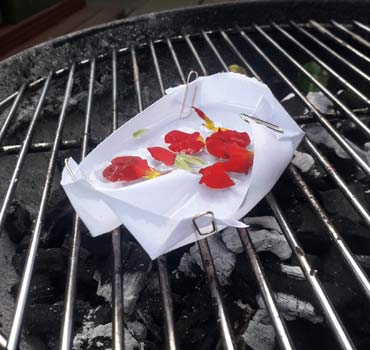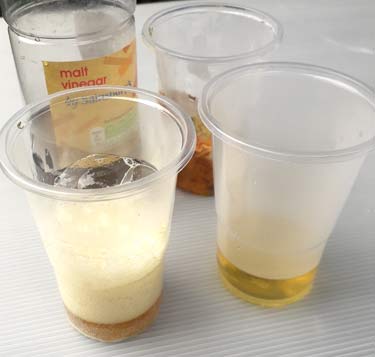This activity goes well with Paper Kettles

Or you can just collect some flowers and pour hot water on to them from a kettle (adult supervision needed). Here I’ve collected some daffodils (they were dead and about to be thrown away).


Give the petals a stir and then pour the solution into another container, leaving the petals behind.If you have enough, divide the solution into two.

Add a few drops of vinegar to one of the containers. The solution should change colour – it will be easier to see a colour change if you have kept one of the containers with the original solution. Here you can see that the left hand container has had the acid added, and has turned much more orange.


Vinegar is an acid, and the plant colour is acting as an indicator. You can try other liquids to see if they are acid – lemon or lime juice works well.
Many plant colours will work as an acid indicator – the only one that won’t is green (the chlorophyll in plants). All the other colours give some sort of change, but the red/purple colours are usually the best. These pictures show bluebells being used.


And here’s the change with vinegar.

The container with acid has turned from blue/green to orange.
You can also try turning the colours back to their original by using up the acid. Here I’ve added some baking soda (sodium bicarbonate) to the daffodil and vinegar mix.


Even if you don’t get all the way back to the original colour, you get a very satisfying fizz as the two chemicals react.
You can also use your flower colours as Dyes
One other interesting plant to use is red cabbage. My thanks to the childrenaa of Berger School, Hackney for sending me the following.


The colour changes from blue to red as you add the acid. The next picture shows what happens when you add baking soda (sodium bicarbonate). The blue colour is beginning to reappear.

